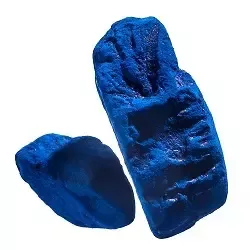Exploring the Art and History of Indigo Fabric Dyeing Techniques
The Art and History of Indigo Fabric Dye
Indigo, a deep blue dye derived from the indigo plant, holds a significant place in the history of textile production across many cultures worldwide. For thousands of years, this vibrant dye has been used to color fabrics, creating a rich tapestry of cultural significance and artistic expression. Today, the allure of indigo fabric dye continues to captivate fashion enthusiasts, artisans, and eco-conscious consumers alike.
The Origins of Indigo Dye
Indigo dye has its roots in ancient cultures, with some of the earliest evidence dating back to around 2500 BC in Egypt and the Indus Valley Civilization. The use of indigo spread throughout the world, with notable developments in regions such as East Asia, West Africa, and the Americas. Each culture adapted the dyeing techniques and created unique fabrics, often embedding social meaning and symbolism associated with the deep blue color.
In many societies, indigo was not just a dye; it was a source of wealth and a status symbol. In Japan, for instance, indigo became synonymous with the traditional craft of kiseki, or indigo dyeing, which flourished in the Edo period. This was largely due to the high value placed on indigo-dyed textiles, which were often used for kimonos. The techniques of binding, stitching, and dyeing in various patterns, like shibori, brought intricate designs to life, and the indigo color stood as a testament to the skill of the craftsperson.
The Dyeing Process
The process of dyeing fabric with indigo is both an art and a science. Traditionally, the indigo plant underwent a fermentation process involving water and natural ingredients, allowing the dye to be extracted. This natural indigo dye is unique due to its complex chemistry, requiring specific techniques to achieve the desired shades of blue.
indigo fabric dye

Dyeing with indigo is exciting because of its “green” nature; it’s a natural product, biodegradable, and often free from toxic chemicals. Fabrics dyed with indigo retain their vibrant color in ways synthetic dyes cannot match. To apply the dye to fabric, artisans often utilize a resist-dyeing technique, where parts of the fabric are bound, stitched, or tied to create patterns that resist the dye. This technique preserves the original color of the fabric in those bound sections, allowing for stunning, intricate designs that tell a story.
Modern Revival and Eco-Conscious Fashion
In recent years, there has been a resurgence of interest in indigo dye as part of the broader movement towards sustainable fashion. Many designers and consumers are shifting away from fast fashion and synthetic dyes in favor of eco-friendly, natural options. This has led to a revival of traditional indigo dyeing techniques, with artisans framing their work not just as a means of production, but also as a form of cultural expression and identity.
Brands that incorporate indigo into their collections often highlight the labor-intensive process involved and the ethical implications of using natural dyes. Moreover, the appeal of unique indigo fabrics lies in their artisanal nature—each piece is a work of art, often varying in hue and texture, telling a unique story of its creation.
Conclusion
From ancient civilizations to modern-day fashion, indigo fabric dye remains a symbol of creativity, tradition, and sustainability. Its historical significance and aesthetic allure continue to inspire artists and designers around the world. As we move towards a more eco-conscious future, indigo dye not only stands out for its stunning color but also carries the weight of cultural heritage and environmental responsibility. It exemplifies how a single dye can bridge cultures, embody history, and inspire new creative explorations in the realm of textiles.
-
Thermal Stability Analysis of Bromo Indigo Pigments
NewsJun.06,2025
-
Sulphur Black Dye Oxidation Process Optimization
NewsJun.06,2025
-
Lightfastness Testing of Bromo Indigo Dyed Denim
NewsJun.06,2025
-
Granule Size Distribution and Jeans Color Uniformity
NewsJun.06,2025
-
Gradient Dyeing Methods with Indigo Blue Granules
NewsJun.06,2025
-
Dyeing Temperature Effects on Sulphur Black Color Fastness
NewsJun.06,2025
-
Sulphur Black Dyes in Daily Use
NewsMay.07,2025

Sulphur Black
1.Name: sulphur black; Sulfur Black; Sulphur Black 1;
2.Structure formula:
3.Molecule formula: C6H4N2O5
4.CAS No.: 1326-82-5
5.HS code: 32041911
6.Product specification:Appearance:black phosphorus flakes; black liquid

Bromo Indigo; Vat Bromo-Indigo; C.I.Vat Blue 5
1.Name: Bromo indigo; Vat bromo-indigo; C.I.Vat blue 5;
2.Structure formula:
3.Molecule formula: C16H6Br4N2O2
4.CAS No.: 2475-31-2
5.HS code: 3204151000 6.Major usage and instruction: Be mainly used to dye cotton fabrics.

Indigo Blue Vat Blue
1.Name: indigo blue,vat blue 1,
2.Structure formula:
3.Molecule formula: C16H10N2O2
4.. CAS No.: 482-89-3
5.Molecule weight: 262.62
6.HS code: 3204151000
7.Major usage and instruction: Be mainly used to dye cotton fabrics.

